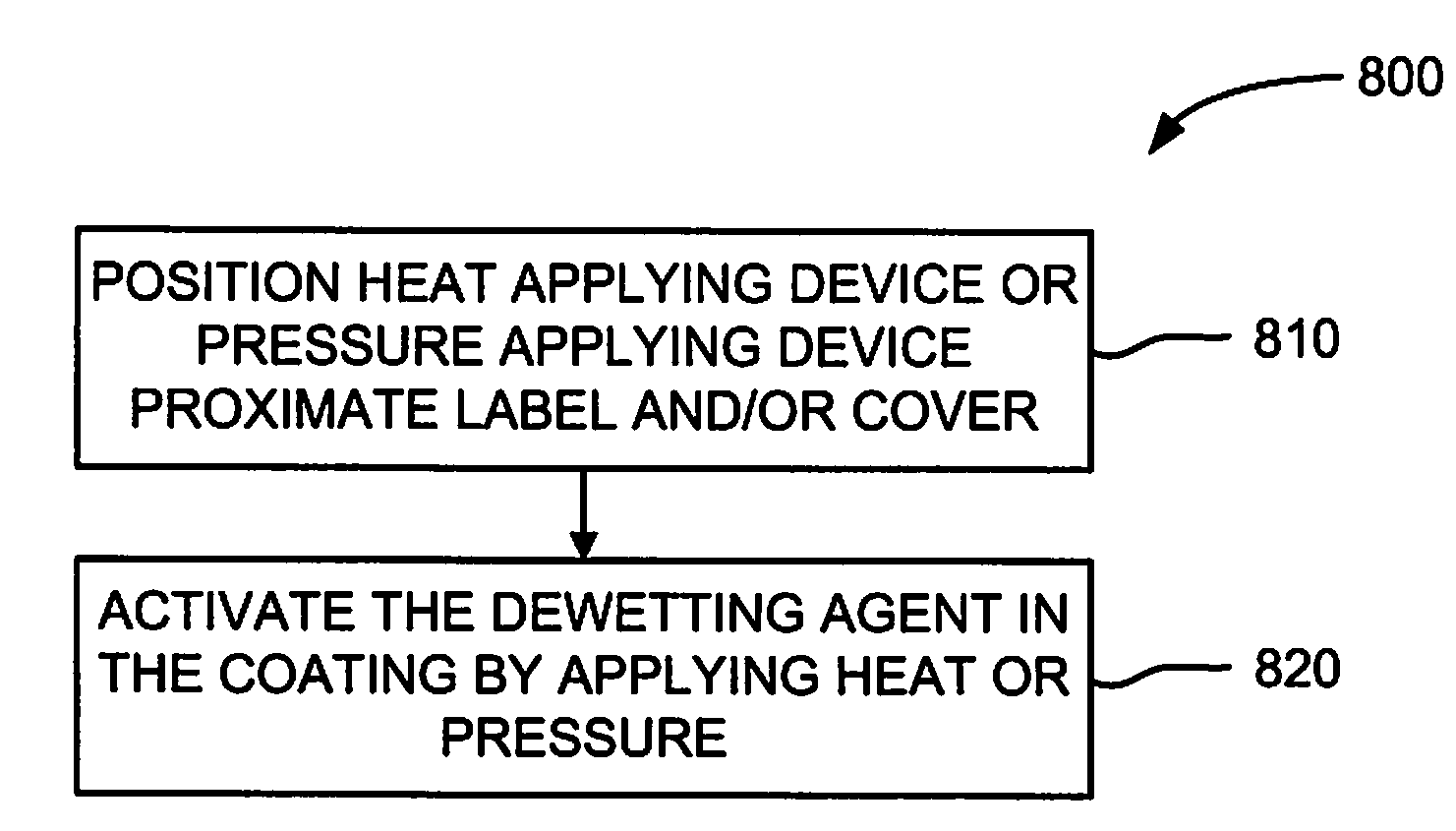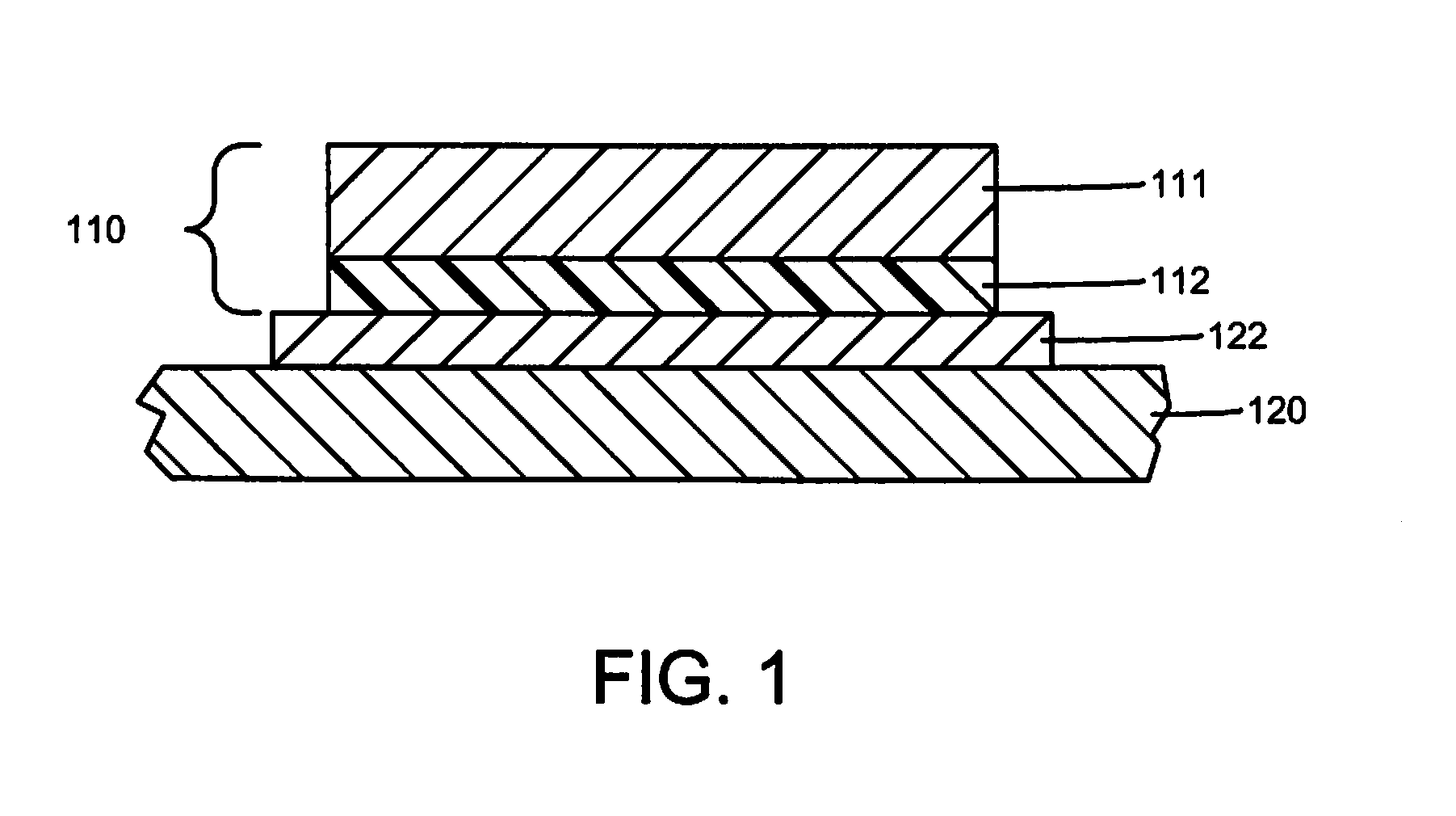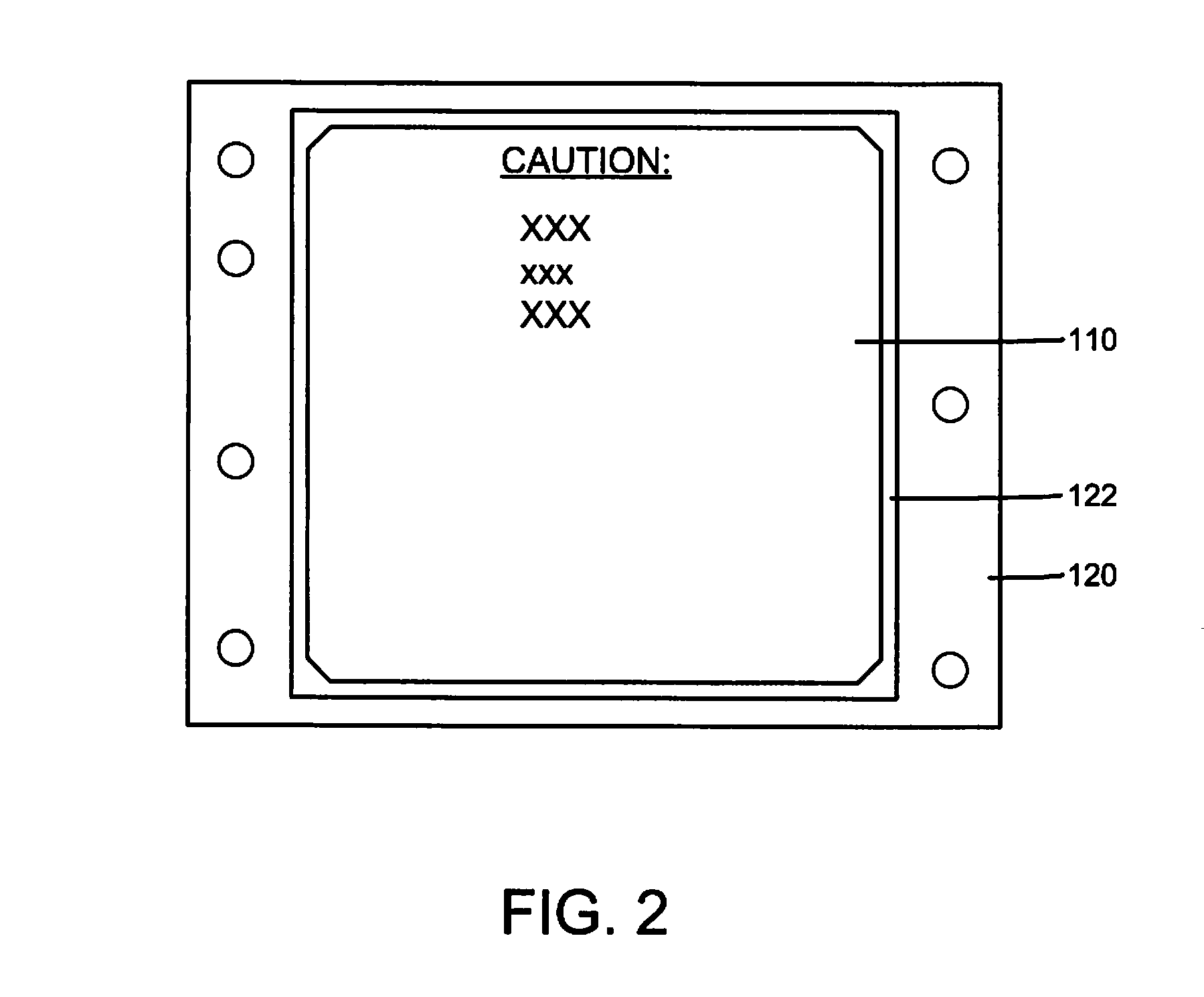Apparatus and Method to Enable Easy Removal of One Substrate from Another for Enhanced Reworkability and Recyclability
a technology applied in the field of reworkability and recyclability, can solve the problems of affecting the reworkability or recyclability of the label, affecting the reworkability or recyclability of the product, and generally undesirable for users, so as to facilitate the removal of the first substrate from the second substrate. , the effect of enhancing reworkability or recyclability
- Summary
- Abstract
- Description
- Claims
- Application Information
AI Technical Summary
Benefits of technology
Problems solved by technology
Method used
Image
Examples
Embodiment Construction
[0019]1.0 Overview
[0020]In accordance with the preferred embodiments of the present invention, a first substrate (e.g., a label, EMC gasket, etc.) is easily removed from a second substrate (e.g., a cover of a computer enclosure) for enhanced reworkability or recyclability. The substrates are affixed to each other by an adhesive layer. A coating that includes a dewetting agent is interposed between the second substrate and the adhesive layer. Removal of the first substrate from the second substrate is facilitated by applying heat and / or pressure to activate the dewetting agent. Preferably, the dewetting agent thermally decomposes to form gaseous products at a predefined temperature. Heat may be applied through one or more of the substrates to drive the dewetting agent to decomposition, which forms bubbles that lift the first substrate relative to the second substrate. Optionally, the dewetting agent may be encapsulated in microspheres. For example, the dewetting agent may be silicone...
PUM
| Property | Measurement | Unit |
|---|---|---|
| thickness | aaaaa | aaaaa |
| temperature | aaaaa | aaaaa |
| pressure | aaaaa | aaaaa |
Abstract
Description
Claims
Application Information
 Login to View More
Login to View More - R&D
- Intellectual Property
- Life Sciences
- Materials
- Tech Scout
- Unparalleled Data Quality
- Higher Quality Content
- 60% Fewer Hallucinations
Browse by: Latest US Patents, China's latest patents, Technical Efficacy Thesaurus, Application Domain, Technology Topic, Popular Technical Reports.
© 2025 PatSnap. All rights reserved.Legal|Privacy policy|Modern Slavery Act Transparency Statement|Sitemap|About US| Contact US: help@patsnap.com



